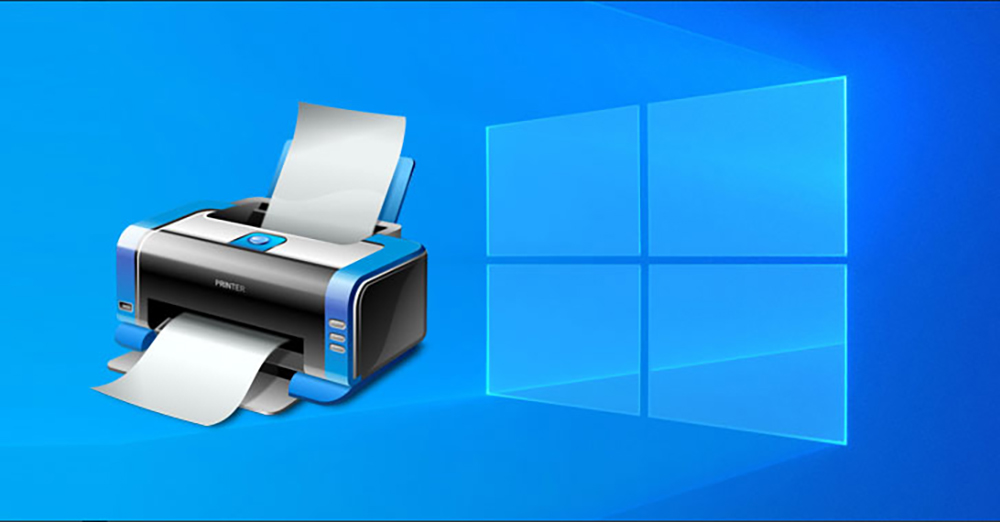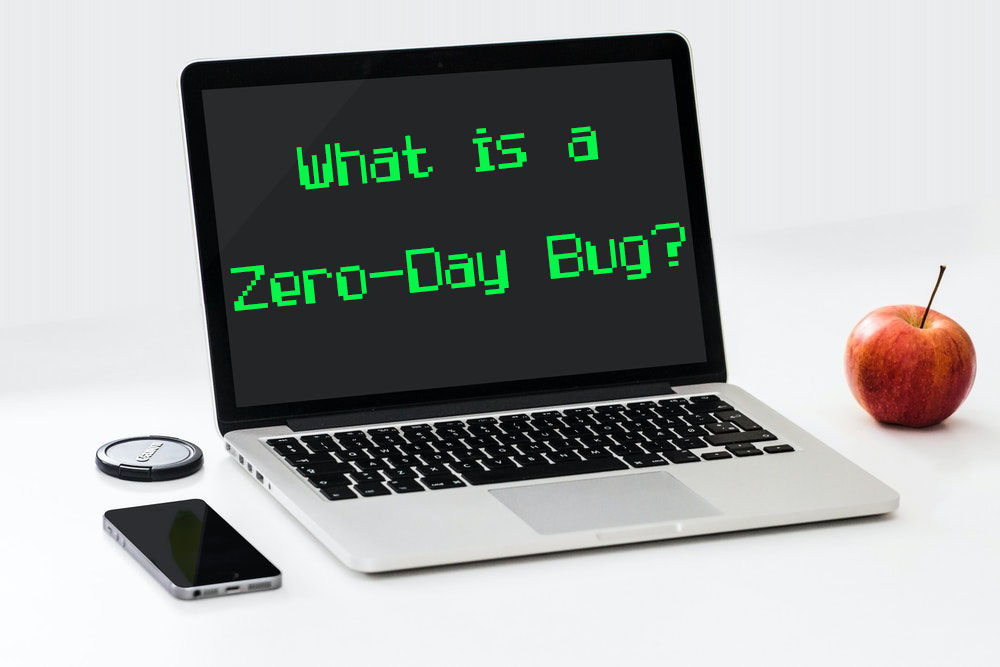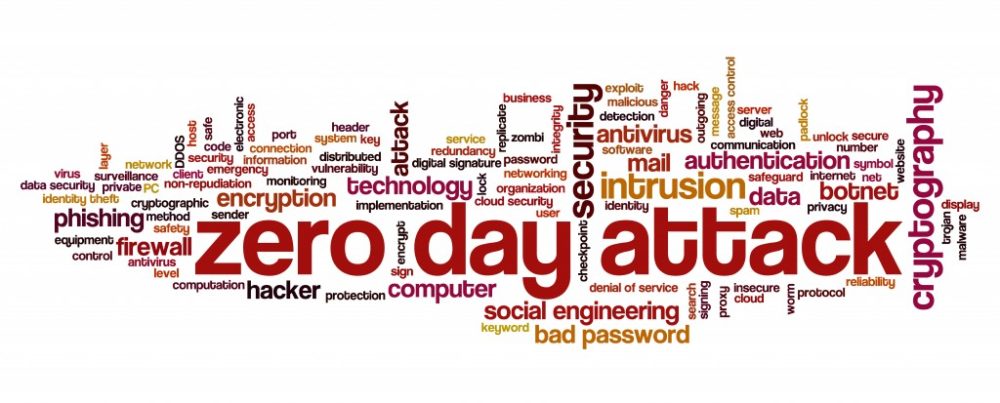If you are reading this article, you have likely heard of what a zero-day bug is. You may also wonder what the difference between a zero-day bug and an exploit is. Zero-day bugs have been a huge threat to our online security. They can be used to steal information, destroy files, and more. I will explain zero-day bugs, what you need to do to protect yourself from them, how you can become an ethical hacker, and the security risks you shouldn’t be taking.
Table of Contents
What is a Zero Day Bug?

Photo by Egor Kamelev from Pexels
A zero-day bug is when someone finds a new vulnerability on your computer or website without telling anyone about it. This means they find something that no one else has found before. Once they know about it, they tell the companies to develop patches and security updates to solve the problem. If they don’t get the security loopholes fixed soon enough, hackers could use these vulnerabilities against you. A good example would be if a hacker could hack into your email account and changed your passwords.
The best way to avoid being affected by a zero-day bug is to keep up with updates. Updates are patches that help prevent exploits like those mentioned above. These updates come out monthly and should always be installed immediately after downloading them.
A zero-day bug is a flaw in the system that can be exploited before anyone knows what even exists. It gets its name because there are 0 days between when the bug’s existence becomes known to hackers and when they exploit them. As you can imagine, these are dangerous threats to our online security, as many rely on software daily. They are what make zero-day bugs so dangerous.
A zero-day bug is also called a “Zero-Day Exploit.” A zero-day bug can be used to execute code on the system, allowing hackers access to it without warning or consent from us. Hackers can use these bugs for unethical activities like stealing our personal information and destroying our files.
Zero-day bugs can be used for good and evil purposes, depending on what the hacker has in mind. It is often hard to know their intentions until it’s too late. This makes zero-day bugs a significant threat to our online security that we must all take seriously!
Zero-Day Exploits: What are They and How Do We Protect Ourselves From Them?
There are two types of zero-day bugs; remote and local. Remote zero-day bugs allow attackers to control another person’s device remotely through some network connection. Local zero-day bugs give attackers full access to a user’s machine directly. The most common type of zero-day bug is the RCE which allows hackers to run malicious programs on our machines.
An exploit is any method that takes advantage of a previously unknown weakness in a program or operating system. An exploit does not necessarily require a virus or malware infection. Many times, viruses are just tools used to spread exploits. Several different ways exploit code works. Some examples include buffer overflows, format string attacks, stack overflow, etc.
Exploits usually start small but grow larger over time. When attackers discover a new vulnerability, they will try to figure out how to exploit it. They may do this by testing their ideas or using other methods, such as reverse engineering. Reverse engineering involves taking apart a piece of software and figuring out exactly how it works. By doing this, an attacker learns more about the weaknesses in the software and then uses that knowledge to create an exploit. Once an exploit is created, it needs to be tested.
An example of a zero-day exploit would be if someone could find out about a new vulnerability in your operating system and then create a program that exploits that vulnerability. The problem with zero-day exploits is that they usually only exist for a short period. Once the company that created the OS or software discovers the exploit, they should release patches to fix it within 24 hours. If you don’t update your computer immediately after installing those updates, you could still get infected by the exploit.
How Do Zero-Day Bugs Work?
The way that zero-day bugs work is similar to how viruses spread through email attachments. When people receive emails containing malicious attachments, they open up the attachment and run whatever programs are inside. In some cases, the virus opens up other programs that allow the attacker to control the victim’s machine. The same thing happens when users download applications from websites. Some sites contain malware that infects computers once downloaded. These infections can cause problems ranging from slow performance to complete data loss.
Why are Zero-Day Bugs so Dangerous?

Photo by Tima Miroshnichenko from Pexels
Zero-day bugs are a big deal because most companies aren’t prepared for them. Most organizations spend months trying to identify vulnerabilities in their systems. However, since zero-day bugs come along every few weeks, they never really catch onto them. That means that hackers can easily attack any organization at any time.
Another reason why zero-day bugs pose such a danger is that they can be tough to detect. Since they are unknown flaws, no one ever expects them to happen. Because of this, it takes longer than usual to discover them. It might already be too late when the public realizes something is wrong.
If You’re Not Prepared For Zero-Day Attacks…
Zero-day vulnerabilities are extremely dangerous because there’s nothing anyone can do to stop them. To protect yourself against these attacks, you need to stay vigilant. This includes ensuring that all devices connected to your network are running current versions of security software. It would be best if you kept an eye out for suspicious activity around your network. Ensure you have updated antivirus software installed on each device connected to your network. Also, try not to install anything from untrusted sources. Finally, make sure that you regularly back up important documents and files using cloud storage services like Dropbox or Google Drive.
There are several ways that you can protect yourself against zero-day attacks:
- You need to use strong passwords for everything, including social media accounts.
- You should avoid downloading apps from third-party stores unless you trust the developer.
- You should check your browser history frequently to see where you’ve been browsing before.
- It would help if you scanned your devices for known threats daily.
- It would be best to consider investing in anti-virus and anti-malware solutions that will help prevent future attacks.
What is Vulnerability, and How Can I Identify It?

Photo by Mikhail Nilov from Pexels
A vulnerability is simply a weakness in your security measures. Hackers know all kinds of things about us. They may even know our birthdays! This makes it easy for them to figure out what we do online. To combat these weaknesses, there are two main types of defenses available. One type blocks access to certain parts of the internet, while another method uses encryption technology to scramble information as it passes between different servers. Both methods are effective but require additional resources.
What is Zero-Day Bug Bounty Program?
Zero-day bounty refers to a reward offered by a company after discovering a new flaw in its products. Companies offer bounties to anyone who discovers a previously undiscovered exploit. Once discovered, the hacker receives money based on the severity of the issue. The hacker could earn thousands of dollars if the problem were severe enough.
Recently, big tech companies like Google and Facebook have started what is known as “bug bounty programs.” By participating in these bug bounties, we can help prevent zero-day bugs from being exploited further! These bug bounties are what motivate hackers to find zero-day bugs.
When a hacker finds what they believe to be a zero-day bug, it is reported to the company by submitting what is known as a “bug report.” They get paid for finding these security loopholes if their report is accepted! This incentivizes hackers to participate in these programs rather than using them against us. Many companies have started offering rewards of up to $20,000 for what they believe to be a zero-day bug that is particularly dangerous.
Last year, nearly $45 million was paid out to bug hunters, and this year will eclipse that amount since Microsoft alone has paid out $13.6 million in rewards in the past 12 months, with the largest reward being $200K.
How Can You Become an Ethical Hacker?
To become part of Google’s ethical hacking group, you must apply through one of their official channels. You can either submit your application on their website or via email. After applying, you’ll receive instructions on how to proceed with your application.
Once approved, you’ll be given a unique ID number. From here, you’ll be asked to complete some tests before receiving access to the full site. These tests include things like password cracking, social engineering, etc. Once completed successfully, you’ll be granted access to the main page, where you can begin searching for bugs within various applications.
The best thing about this process is that you don’t have to worry about getting caught doing anything wrong, and you may even get some cash rewards. All you have to do is follow the rules set forth by Google and report yourself when you’ve discovered something new. This means you won’t be punished for trying to hack into systems without permission. It’s another step towards protecting ourselves from cyber-attacks and collecting a zero-day bug bounty.
What are Google Project Zero and Microsoft Vulnerabilities?

Photo by PhotoMIX Company from Pexels
The Google Project Zero bug tracker is a program run by Google that rewards researchers who discover vulnerabilities in Google’s codebase. The project has recently expanded into other areas, such as Android and ChromeOS. In addition, Google also pays people if they find flaws in any open-source projects used by Google. For example, if someone found a critical vulnerability in OpenSSL, Google would pay them for reporting it.
Google project zero is what you might call an “ethical hacker program.” They were created by Google engineers who realized the dangers of these bugs being exploited against us, so they formed their team of “ethical hackers.” Their goal is to use what they know to prevent zero-day bugs from being exploited.
They do this by finding and reporting the vulnerabilities rather than waiting for someone else, like a hacker. They have been very successful so far with their bug bounty programs! Google project zero discovered what is known as “Stagefright,” which was considered the worst Android bug in history.
They could use what they knew about this zero-day exploit for good instead of evil, preventing it from being used against us again! The same can’t be said for hackers because once Google found out what Stagefright was, they immediately notified all android and google play store users of what they did.
Microsoft also has what is known as “vulnerability warning services” that will tell you if your system or software has been compromised. They do this for personal computers and devices such as Xbox One and Windows phones too! If no vulnerabilities are found, you will be notified of what is known as a “security update released” instead.
Kaseya VSA Software Vulnerability

Image courtesy of Kaseya
This year, the largest zero-day attack happened on July 2nd when the REvil Ransomware gang managed to breach Kaseya, which affected around 1500 companies, including MSPs. A few days later, the company announced that its customers had been infected with a variant of the REvil ransomware.
This particular version of REvil finds security flaws and then encrypts files using the AES encryption algorithm. However, unlike other variants of Revil, this one doesn’t contain an embedded decryption key. Instead, it uses a custom RSA public/private key pair generated during infection. REvil demanded $70 million from Kaseya but let smaller companies off easier and demanded $45K worth of Bitcoin payments.
Windows Printer Spooler Relay Zero-Day

Photo courtesy of Feature Weekly
The Windows PrintNightmare zero-day bug occurred in what is known as the Windows print spooler process. Security vulnerabilities can be used to execute code on the system, allowing hackers access to it without warning or consent from us. Hackers can use these bugs for unethical activities like stealing our personal information and destroying our files. This has caused huge headaches for many Windows users because a DDoS attack can be used.
The release was made public in what is known as May 2014, when hackers started exploiting what they knew about this zero-day threat to gain unauthorized access to systems and data from unsuspecting victims. There were ongoing attacks for over seven months before Microsoft’s technical experts figured out what was going on and released security patches and software updates for this bug have caused many people to be dissatisfied. Fast forward to 2021, and Microsft’s security loopholes are still being exploited while we still see ongoing attacks, but Microsoft supposedly has it patched up for now.
The Worst Zero-Day Exploit to Date

Photo courtesy of APP Technology
In what is known as July 2015, an unknown hacker exploited a security hole in Adobe Flash Player, which allowed him to run malicious code on vulnerable machines. He did so using a zero-day exploit called CVE-2015-5122. What makes this particular bug worse than others is that he didn’t stop after gaining control of the machine; he uploaded his malware onto other websites. In total, more than 1 million sites were affected by this issue.
This type of behavior is unacceptable and should never happen again. If someone finds themselves infected with any virus, they shouldn’t upload it anywhere unless instructed by a trusted source. They also shouldn’t try to sell it off to anyone who might pay money for such items. Instead, they should contact law enforcement immediately.
There will always be a way around whatever problems arise in today’s world. We need to know all the possible security risks and ways to protect ourselves against threats. By learning to identify vulnerabilities and take steps to prevent them, we can ensure that no one gets hurt.
List of Security Risks You Shouldn’t be Taking
- Always keep your software up to date and perform browser software updates promptly.
- Never download anything from untrusted sources.
- Use strong passwords when logging into online accounts to increase device security.
- Keep your operating system updated at least once every month.
- Don’t click on links or attachments sent via email. It could contain malicious software.
- Avoid visiting sketchy web pages to lower security risks.
- Be careful when downloading apps from third-party stores.
- Only install applications from reputable developers.
- Install security updates automatically.
- Back everything up regularly.
- Make sure your core technology is up to date and in proper working condition.
- Disable unnecessary services.
- Enable firewall protection to secure vulnerable systems.
- Change default settings whenever prompted.
- Use comprehensive security software and update antivirus definitions frequently.
- Scan external drives before plugging them into computers.
- Turn off Wi-Fi networks when not needed.
- Do not use weak or shared network passwords.
- Set parental controls on devices used by children.
- Encrypt sensitive files.
- Limit internet usage time.
- Restrict access to personal information.
- Report suspicious activity to authorities.
- Monitor social media posts carefully.
- Delete cookies periodically.
- Remove unused programs from the startup list.
- Keep browser software updated and uninstall unwanted browser extensions.
- Block popups.
- Log out of accounts when finished browsing to protect online privacy.
- Check online privacy policies before sharing data.
- Consider installing anti-malware tools like SentinelOne.
- Run scans often.
- Perform frequent maintenance tasks and periodic updates.
- Create different user profiles for each device.
- Protect yourself while traveling abroad.
- Stay away from public places where people gather.
- Watch out for phishing scams that may lead to a social engineering attack.
- Beware of fake emails claiming to contain urgent messages.
- Take advantage of free credit monitoring services to prevent identity theft.
- Pay attention to warnings about unsafe downloads and unknown threats.
- Read reviews before buying products.
- Remember that nothing is 100% secure.
- Be careful when receiving messages on devices and practice proper device security methods.
Wrapping Up
The question, “what is a zero day bug,” has been asked a lot recently, and we hope we’ve cleared things up and not made them too difficult to understand. Please note that zero-day bugs are dangerous and can lead to issues if not dealt with properly. As long as you aren’t taking any unnecessary security risks and have comprehensive security software installed, you are ahead of the game and safer from cyber attacks. Please comment below or send us a message if you’d like more info on zero-day bugs. As always, stay safe out there!






Recent Comments